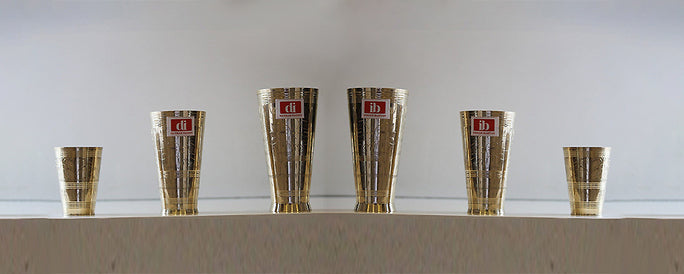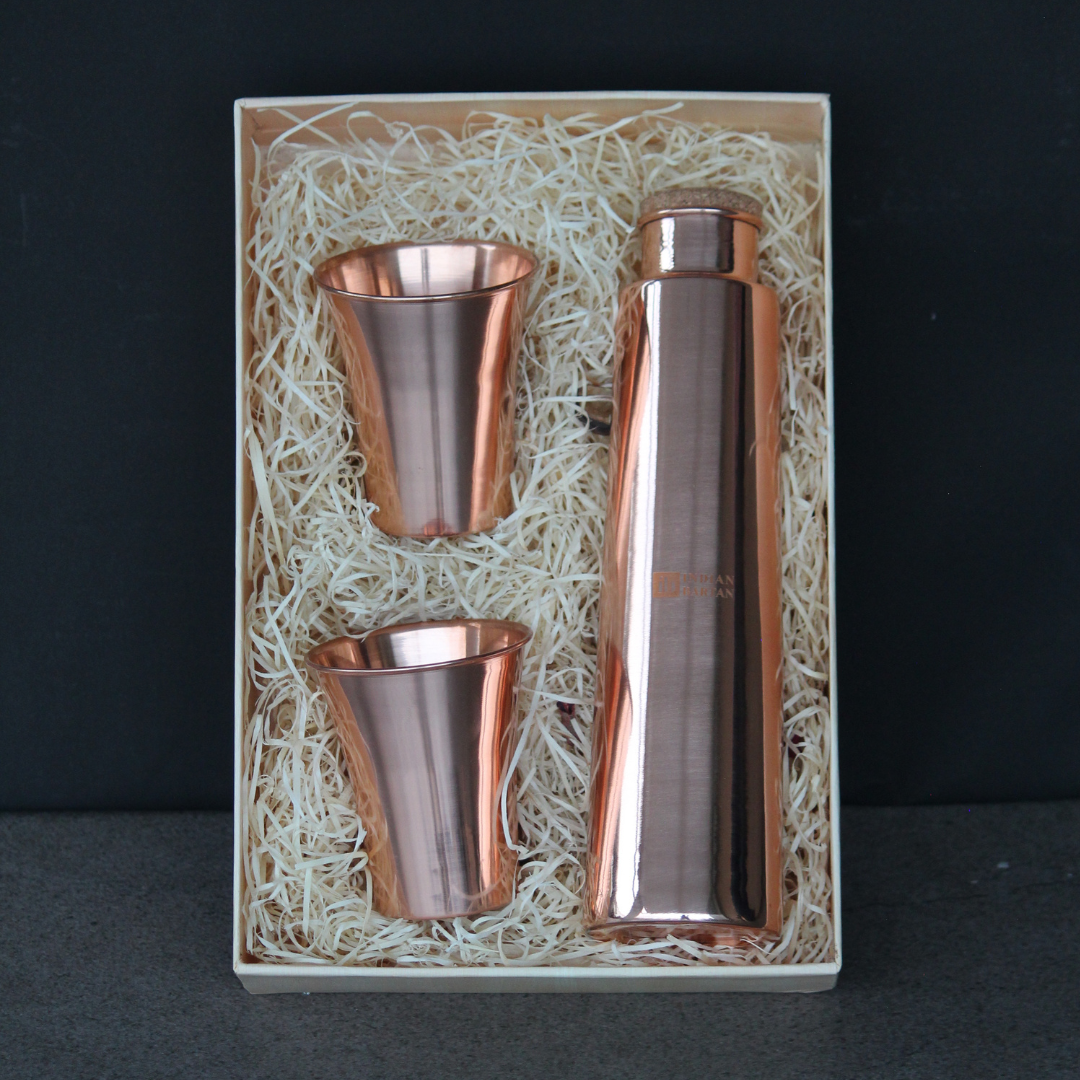
Different Attributes Of Brass Alloy
Share
Brass is an alloy made of zinc and copper. The ratio of copper to zinc is different to produce different types of brass metal utensils. That is, the amount of zinc and copper can vary from 5% to 45% to 55% to 95% considering weight. Usually, lead is added to the brass at a concentration of about 2%. The addition of lead enhances the machinability of a metal. Yet, effective lead leaching usually occurs, also in brass where the total lead concentration is fairly low.
Characteristics of Brass Alloy
- The ductility of brass counts on the zinc composition; brass with a zinc content of approximately 45%, whether hot or cold, is not workable.
- This kind of brass is termed white brass. Although it is used in the form of particles in brazing (welding), it is of little industrial importance. They also constitute the basis of specific metals used in die casting.
- Forgeable brass can be subdivided into cold-workable brass (usually with a zinc content of less than 40%) and hot-workable brass with the higher zinc content.
- The former group is called Alpha Brass. Generally, it is comprehensively used in the manufacture of bolts, pins, screws and ammunition shells.
- Beta brass has poor ductility but higher strength. So, it is appropriate for making sprinklers, faucet handles, door and window fittings and other fixing devices.
- When it is about the third group of brass, these are those that contain different elements in addition to zinc and copper. These elements are included to enhance mechanical and physical properties, workability, or corrosion resistance or change color. There are lead brasses that can be machined easily. However, admiralty and naval brasses in addition to tin boost the corrosion resistance with seawater. The aim of Aluminum brasses is to give corrosion resistance and strength where the naval alloy can fail.
Properties of Brass Metal Utensils
-
Melting Point
Brass has less melting point that ranges from 900 degrees centigrade to 940 degrees centigrade or 1650F to 1720F. The alloy liquefies when heated to 900 degrees centigrade to 9400 degrees centigrade. So, it is the temperature at which a metal changes its state from solid to liquid.
-
Magnetic Property
The metal is not magnetic in nature. Because of their non-magnetic nature, they are suitable for electronic and electronic equipment. Hence, separating it from scrap is an easy job.
-
Appearance
The general color of brass is glowing gold. In addition to gold, brass has different colors, such as yellow, red, silver and brown. The copper content of brass provides a rose color, and zinc content delivers a silvery-white hue.
-
Bacterial Resistance
As an antimicrobial metal, the bacterias or microorganisms, such as pathogens cannot stay on it. So, it is not advised to be used for door knobs and faucets.
-
Ductility
Ductility is what brass has. The metal can be pulled or removed or racked in thin lines getting broken. However, the alloy is subject to tension when it is tightened into wire. Brass has higher ductility than zinc and copper.
-
Corrosive Resistance
As of anti-corrosive nature, a protective layer with an extensive amount of copper forms. It is surrounded by metal and saves the metal from corrosion.
-
Malleability
Comparatively, the brass alloy has more malleability than zinc and bronze. Basically, malleability is defined as a brass element that can roll or be hammered in sheets without breaking. It can be deformed in compressive strain. Brass malleability relies on zinc composition for the final product. Notably, the content cannot be enhanced by 45% as it lessens the brass workability.
-
Acoustic Property
It has fine acoustic properties and could be used in musical instruments. Moreover, it responds to sound waves. The acoustic resonator of a musical instrument is a narrow and long tube that can be coiled or folded to keep it compact. Because brass metal has good ductility, these musical instruments or their components are made of brass.
-
Electrical and Heat Conductivity
Certainly, the brass alloy is a good electric and heat conductor. Accordingly, it lets the electricity and heat pass from it. Stranded brass wire is used for electric wires for electric conductivity.
Surface Resistance of Brass
- The Brass alloy contains a wear-resistant surface. Also, it has high scraping resistance. In addition, let's find out about the improvement in the brass properties when including different alloys.
- The composition of lead is 2% that assures improvement in brass workability.
- 1% tin is included for resistance improvement to seawater corrosion and dezincification. (Dezincification is a dealloying type in which there is an extraction of alloy components with corrosion). This type of brass is called navy brass because it is widely used in marine hardware applications.
- Also, Aluminum causes brass to be stronger and corrosion resistant through an Aluminum oxide (Al2O3) thin layer close to the metal surface.
- Nickel is included in the brass component to provide brass with a bright silver appearance.
- Iron, aluminum and manganese are responsible for making the brass wear-resistance.
Different Grade of Brass
The availability of Brass metals is in different grades. All of them are represented with the same material elements. The general Brass grades are defined below:
- Alloy 260: It is also termed, Cartridge Brass. It integrates the useful cold working properties. Moreover, it works best for hardware, fasteners, automobiles and ammunition.
- Alloy 272: We call it Yellow brass. It has 33% of zinc composition. Generally, it is used in architectural and industrial applications.
- Alloy 330: The metal is appropriate for the application where high workability is required. It has less lead content than enough for cold-working and is generally adapted to create pipes.
- Alloy 353: It is used usually for fabricating precision elements, like a watch and clock parts; the outstanding machinability is the reason behind it.
- Alloy 360: This brass alloy is also called Free cutting brass. It is one of the common types. It has superior formability and machinability and is suitable for brazing and welding operations. The metal is basically used to manufacture hardware components, valves, fittings, and fasteners.
- Alloy 385: This alloy is also called architectural bronze and can be used in architectural and construction applications. It is available in a broad variety of drawn and extruded shapes, like a square tube, handrail molding & channels, angles, etc.
- Alloy C48200 – C48500: Leaded navy brass is implied for machinery. However, it is usually provided in rounds.
- Alloy 464: It can also be called naval brass. It has higher corrosion resistance at different temperatures. Moreover, it shows suitability for hot forming, welding, brazing, soldering, heading, bending, drawing rec,
Concluding Remarks
So far, through the above characteristics, we have a full understanding of the characteristics of brass. We can use pure brass utensils for different applications. Its color varies from red to silver, golden yellow is also included. The alloy is used to create decorations, such as utensils, pots, armor, faucets, coins, etc.
Underlining its in-house use, door handles, brass faucets, electrical accessories, valves, etc. can be used to maintain sanitary and shockproof. The metal can also be made by recycling scraps, which saves the economy and contributes to sustainable development.

